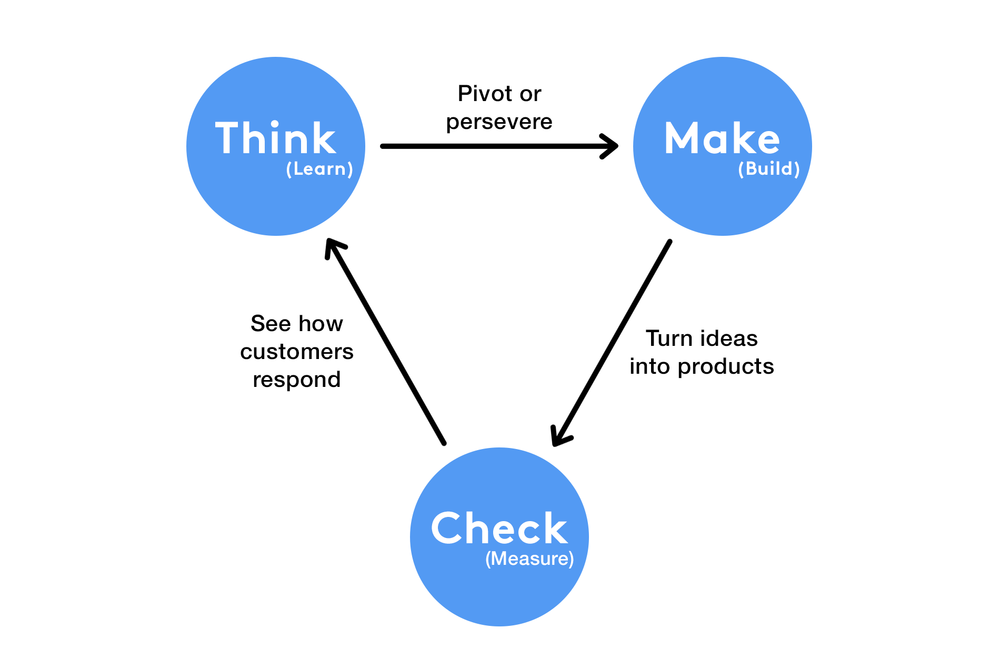Latest news about Bitcoin and all cryptocurrencies. Your daily crypto news habit.
The niche of social media is very perspective for business, though it’s occupied by big players like Facebook, Instagram, Flickr, etc. This niche is flourishing and actually, there is a space for new ideas.
To understand how to build a social network, let’s first define what social network is and what features does it have.
What is a Social Network?
A social network is a platform (website or mobile application), where individuals meet online to communicate or share information by making posts, sending messages, or leaving comments. Users can fill in their personal data in account pages to tell the world about themselves.
Types of social networks
The classification of social networks will help you to understand the players of the market and can provide you with some new ideas.
Classification by platform
- Web-based social networks can only be accessed through browsers. Most popular networks like Facebook and Twitter started as websites. This can be the case if a social network is a part of your project. For example, our team have built an e-learning platform with social network feature inside, where students can communicate and collaborate with each other and make connections.
- Hybrid networks have both web and app versions. This is the most valuable way, as not every user can download an additional application to their phone and would like to access it via a browser. Consider progressive web application as an additional solution.
- Mobile social networks are developed to work only on mobile devices and tablets. We think that most of the social networks should have a mobile app, as users use social networks on a daily basis and want to have an application on the home screen.
Classification by audience
- There are general social networks like Facebook that connect all of the people. This place is also kept by Twitter, Instagram, and Pinterest.
- Niche networks aim to connect people with the same interest. For example, Soundcloud was developed for musicians to share their music and Goodreads for book lovers.
Classification by purpose
- Dating social networks help people to find their future love. Such apps like Badoo and Tinder provide this service.
- Informational social networks are developed to provide users with the information they are searching for. This includes review websites like Yelp and Q&A like Quora.
- Educational social networks let students communicate, collaborate and share knowledge with each other.
- Commerce networks provide users with an ability to shop online, as well as communicate inside a platform. For example on CreativeMarket, independent artists can sell their digital products, like and follow other artists and share the news.
- Multimedia sharing networks allow users to share their content and connect with other creators. Take Flickr as an example, where artists share their photos and find inspiration.
- B2C platforms let people find information about companies, services, or products and make purchases.
- Social connections networks just connect individuals like Facebook does.
The type of your social network will directly depend on the purpose and idea. Read below about the steps of building a social network.
How to build a social network
1. Define Your Target Audience
Who are you building a social network for? Who will use it and why? What problem do you solve? It is critical for you to answer these questions as your strategy, design, and marketing will depend on it.
How to define the target audience?
Cover these points:
DemographicsDemographics will help you start narrowing down your audience, they include:
- Age
- Gender
- Occupation/Industry
- Income
- Marital Status
- Educational Level
LocationMaybe your social network is for local community or work in a specific country only. It’s better to define it now as it will be used later in marketing.
PsychographicsThis includes audience behavior, hobbies, interest, and activities. For example:
- Gardeners
- Football lovers
- Housewives
- Paints collectors
- People who are looking for the lowest price
- People who shop online often
We recommend to take it seriously and spent a fair amount of time as it is fundamental for your whole project.
2. Develop a Strategy
We are sure you have this great idea in your head, you know what and for whom you want to build. Now it’s time to develop a killer strategy that will help you realize it.
We recommend to start small and build MVP first (minimum valuable product). This approach will help you to see feedback and support from the audience before you build the whole thing up. The agile methodology that we use at Elligense helps save time and money by gradually adding features and learning from users feedback.
So the first question to answer here is what your MVP is. What is the main feature users come for? After that think about growth strategy and marketing, you have to be ready to expand. Make at least a first and five years plans.
3. Pre-development work
A social network is a big and complex software that needs a development team to be built. When you have your target audience defined, a clear idea, growth strategy developed and design ideas, you have to consider some things before contacting a software development services vendor:
- Money. The development of social network will take from 200 to 1000 hours of work, depending on the set of features. You have to have a clear imagination about the cost of your project and decide whether you will search for a development team inside your country or outsource the development process.
- The Platform. Do you want to create a website only, app only or both? You should know it before contacting the development team, so they can give you an accurate estimation.
- Traffic Estimation. The amount of traffic your network will hold will define the technology the development team will use. It’s hard to have an accurate estimation but define approximate traffic in 5 years.
4. Design
The design itself includes 4 steps:
- Sketching. The very basic and rough image of the application to have a vision of the number of screens and logic between them.
- Wireframing. It is a fundamental step that helps a development team to see the social network’s skeleton, the elements layout and how the user will interact with them.
- Prototyping. A prototype is working a model of the project that gives a customer and development team to understand how the application will actually work. At this stage, insights are gathered and changes are made before the development process, which saves time and money.
- UI/UX design. Here designers convert the prototype into the exact image of the future social network, including animation.
5. Development & Quality Assurance
This is a moment where your idea turns into reality. This process includes back-end work like setting up servers, databases, API, etc and front-end: developing the website or mobile app visual appearance and interactions.
During and after the development quality assurance tests are provided to make sure everything works fine and the code doesn’t have errors, plus we test user experience as well.
6. Publishing & Marketing
When the social network is developed, it’s time to show it to the world by deploying the website to the servers or publishing the app in Google Play Market and AppStore. We recommend to think about marketing before the development process as well as start it before finishing the development stage to gather a base of first users.
7. Support
After the project release, the support and maintenance should be provided, especially if it’s an MVP version. This helps immediately fix issues and push updates based on users feedback. The first month of your network’s life will define its reputation.
Metrics for Social Network Project
We recommend tracking business analytics of your social network that will help you understand how your project is growing and make the right decisions in time.
Customer acquisition cost (CAC)
Customer Acquisition Cost (CAC) is a total sum of all the money spent on advertising to attract the customer. This indicator will define your scalability and profitability of the business model.
User retention and churn rate
User retention rate is a proportion of the number of users to the date they first registered. You should understand if users stay in your network.
Churn rate indicates the number of users who stopped using your website or application. The lower this rate is, the better.
User engagement
This measures how often users take actions in your social network, how long they stay inside and how often they return (every 2 days, or every 2 hours).
Growth
How quickly your userbase is growing from month to month?
Burn rate
The amount of money needed each month to maintain the project. It includes marketing, server costs, staff, etc. This metric will be necessary on the scale and fundraising stages.
Challenges of social network development
The process of building a social network can be challenging, especially if you develop something new and revolutionary. We gathered some main challenges you will face during the development of a social network.
Performance
Nowadays, your project wouldn’t survive on the market if its performance is poor. The user becomes more and more demandable. The website should load under 3 seconds, another way 53% of users will leave according to Google’s research. Mobile application should also load and work fast without any slowdowns. This can be achieved by using powerful technologies and the right architecture.
Security
Users expect that your platform is secure and they can control their privacy. People have to have the ability to hide their personal data, posts visibility, etc. Moreover, messaging between people must be private and encrypted.
Design and user experience
When a user gets into your web or mobile application, he has to instantly understand how to use it and get what he was looking for. It is called an intuitive design and is necessary in today’s world because as mentioned before, the user doesn’t want to wait or think about how to use your application. In case you’ve built a completely unique project with a big number of features, provide the user with a pleasant and quick step by step guide.
Moreover, doesn’t forget about beautiful UI and smooth user experience with the help of animations and well thought out navigation to make a user’s experience as pleasant as possible.
Marketing
Building a great product is half of the way. One of the biggest challenges is to market it right and attract enough users to survive during the first stage. If you have defined your target audience right and built the product that satisfies their needs, it should go smoothly.
How much does it cost to create a social network
The cost of each project is estimated depending on features and technologies. But to give you general vision, the approximate duration of development of a social network with login, personal account, messaging and news feed is about 300 hours. The hourly rate of a developer in the US is $50–200 and $30–120 in Ukraine. In addition, there is unofficial information that Facebook cost $500,000 to be built.
Social Network Development: Types, Challenges, Technologies, Costs was originally published in Hacker Noon on Medium, where people are continuing the conversation by highlighting and responding to this story.
Disclaimer
The views and opinions expressed in this article are solely those of the authors and do not reflect the views of Bitcoin Insider. Every investment and trading move involves risk - this is especially true for cryptocurrencies given their volatility. We strongly advise our readers to conduct their own research when making a decision.



